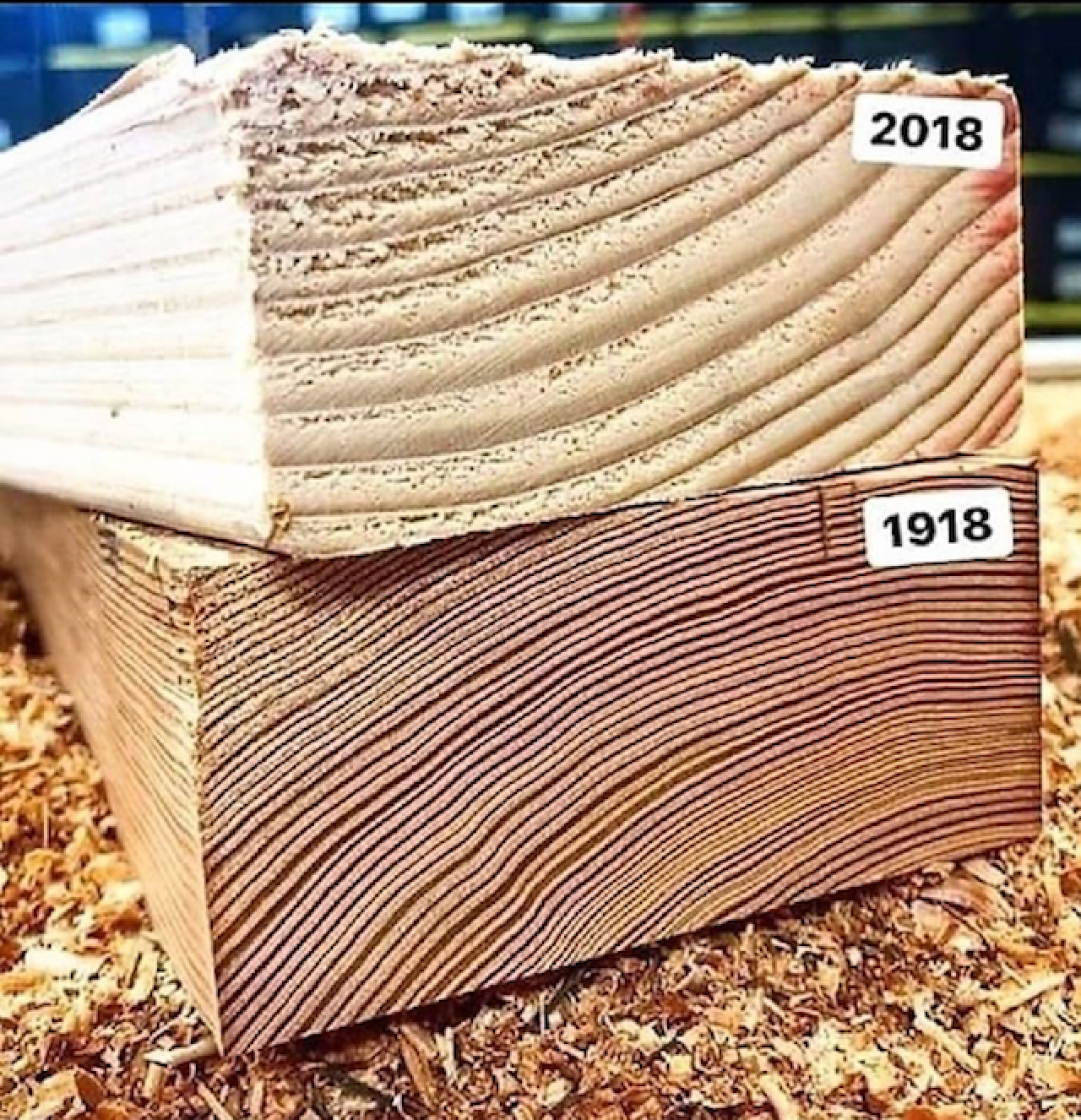Old vs. New Growth Trees and the Wood Products they Make
It’s true what they say, “they don’t make ‘em like they used to.” We know, because our company restores historic windows. Many of these windows are still working well after 100 years. Most brand-new windows will not be in service 100 years from now.
Why? Because wood windows made with “new wood” aren’t made like they used to be. Historic windows made with “old growth” wood, from trees 100 years ago, are the most durable windows there are.
The difference between old growth wood and new growth wood is like the difference between granite and paper. Old growth wood has better stability, durability and longevity. New growth wood and the windows they’re made of, begin to rot and warp after only twenty years.
“Virgin Wood” refers to first -cut wood, or wood harvested for the first time. As early America grew and expanded, we harvested wood from virgin forests as we moved west. Wood harvesting started in New York, then Pennsylvania and into Ohio, then on to the Great Lakes region of Wisconsin and Minnesota. Tree harvesting then turned to the south and finally, after the early 1900’s out west. The virgin wood forest harvesting era lasts from the 1870’s into the 1940’s.
The value of virgin growth wood is that it has grown very slowly over a long period of time. Because of this slow growth, the growth rings are very tight. Tight growth means more stability. In this photo there are 2 pieces of wood 100 years apart. The wood from 1918 has 20-25 growth rings per inch. The wood from 2018 has only 7.
Stability isn’t the only advantage. This slow growth also yields more heartwood. Heart wood is the longest lasting part of the tree, whereas sap wood which will rot very quickly. Note too in the picture above, the wood from 1918 is all heart wood, the wood from 2018 is all sap wood.

This sketch highlights the key differences between old vs new wood. Most wood used today, by contrast, is grown very fast. The wood for a great deal of new millwork today is grown on plantations. Sixty- years ago, timber companies began to grow Radiata Pine in countries like New Zealand and Chile. Grown for quick production, these trees produce very little heartwood and these trees have fewer growth rings per inch.
The effects of new vs. old wood
If you have used finger jointed wood, you see the effects of new vs. old wood. Starting in the 1970’s lumber manufacturers began using finger-jointed wood to compensate for poor wood quality; the warping, twisting, and knots in their new growth wood. They took a board of wood, cut out the defects and then rejoined the pieces with finger joints. Finger joining wood in doors windows, moldings, and framing lumber is necessary because the new growth wood quality isn’t as good. Old growth timber is generally free of knots while plantation grown wood is riddled with them.
The value of old growth lumber is the reason we should NOT throw out old windows. These old windows are structurally superior and can be restored instead of replaced. An old window will last another 100 years if properly cared for. It’s true, “they don’t make ‘em like they used to.”
